Sarah L. Johnson's Blog, page 91
April 15, 2015
Bits and pieces of historical fiction news
 A few announcements and links I've picked up here and there.
A few announcements and links I've picked up here and there.First is that I'm signing up for the Australian Women Writers Challenge. It's been a few years since I participated in a reading challenge, aside from the annual Goodreads one, and this one fits my current reading and interests. The challenge is open to everyone, regardless of geographic location, so I'm in. There are many excellent historical novelists from Australia, and I like the concept behind the challenge: to support and promote books by Australian women.
It helps that I've already read three novels that fit the criteria, so I'm choosing the Miles level - reading six, reviewing at least four. This should be no problem, especially with Kate Morton's The Lake House (which has cover art posted - go look!) and Kate Forsyth's The Wild Girl set to be published in the US this year, among others. I also have Posie Graeme-Evans' Wild Wood on the TBR.
~
A review I linked up on the Historical Novel Society's FB group yesterday has provoked a lot of discussion on the value (or not) that author's notes and bibliographies have for historical novels. In her mostly positive New York Times review of Aislinn Hunter's new dual-period novel The World Before Us, Penelope Lively spent a paragraph criticizing the existence of Hunter's 3 1/2-page acknowledgments section. An excerpt:
It seems to be mandatory nowadays for a novelist (especially a historical novelist) to conclude with an extensive list of source material, along with copious thanks in all directions, as if this were a doctoral thesis rather than a work of fiction. I wish this weren’t so. I don’t want to know about the ballast of research. I want simply to enjoy the author’s evocative skill without being told how it was primed.
Do these extras interest you as a reader, or do they pull you out of the experience? You can see the acknowledgments pages via Google Books (scroll to the very end). Hunter lists four main print resources and a number of people. I was surprised that a reviewer would object to an author thanking her sources, including individuals who gave her access to private archives, answered her questions, and provided her with funding; it seemed like proper acknowledgment rather than scholarly excess.
~
From a week ago last Sunday, Laura Miller's piece on "our enduring Tudor obsession" praises Wolf Hall (print and TV) while denigrating shows like The Tudors and what she terms "princess novels," such as those written by Jean Plaidy and Philippa Gregory, for their supposed emphasis on sex and fashion over serious matters such as politics. Novelist Elizabeth Fremantle provides an excellent rebuttal to many of Miller's points for The History Girls blog. The comments to the latter are worth reading, too. Novelists who write about women's lives and issues still struggle to be taken seriously.
~
The shortlist for the Bailey's Women's Prize for Fiction was just announced, and out of the six titles, four have historical components: A God in Every Stone by Kamila Shamsie, taking place around WWI and later; How to Be Both by Ali Smith, a "literary double-take" set now and in 15th-c Italy; A Spool of Blue Thread by Anne Tyler, moving from the late '50s forward; and The Paying Guests by Sarah Waters, set in 1920s London.
Published on April 15, 2015 10:00
April 11, 2015
A woman's quest for independence in medieval England: Karen Brooks' The Brewer's Tale
Karen Brooks’ The Brewer’s Tale will be a treasure for readers who appreciate an accurately rendered medieval setting and characters who reflect the era. The time frame (the later years of Henry IV’s reign) isn’t one often showcased in historical fiction, especially from a tradeswoman’s perspective.
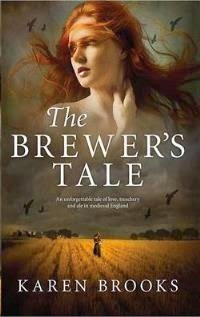 All of the details on the production of ale and beer in early 15th-century England are fascinating to read – from the collection of ingredients to the actual brewing, the quality testing by officials called ale-conners, and the regulations covering sales and distribution.
All of the details on the production of ale and beer in early 15th-century England are fascinating to read – from the collection of ingredients to the actual brewing, the quality testing by officials called ale-conners, and the regulations covering sales and distribution.
On the other hand, the novel’s heroine meets with almost every possible calamity. While the fluid prose is compulsively readable, the periods of uneven plotting made for a bumpy reading experience. Rarely have I read a novel that provoked such a mixed reaction on my part.
After her father’s death at sea, and upon learning that her home and wealth no longer belong to her family, Anneke Sheldrake takes an unusual step. Using knowledge passed down from her Dutch mother, she decides to start a brewery business to provide for herself, her orphaned siblings, and the servants who depend on them.
But Anneke is a single woman from a respected merchant family, and her decision is greeted with disbelief and shock. Her going into trade herself means deliberately lowering her social status, which is incomprehensible to those around her. “It’s like a sackcloth you can never shuck,” her steward, Adam, tells her. “Once you step in this direction, you can never go back.” Brooks deserves credit for faithfully depicting the social strictures faced by her courageous protagonist.
Anneke’s journey toward independence meets with great success in some avenues – with her secret recipes, her brews are a huge hit – but it’s fraught with difficulties. Monks from the nearby friary have their own competing brew and aren’t afraid to play dirty. Anneke’s cousin becomes more spiteful than ever. And that’s just the beginning. I understand her life isn’t meant to be easy, but some episodes felt so over-the-top dramatic that I put the book down at several points, not sure if I wanted to continue. In the end, I’m glad I persisted.
In addition to the realistic late medieval atmosphere, other highlights include Anneke’s relationships with the people who support her, including Adam, a servant-turned-friend and father figure; an older businesswoman, Alyson, who was plucked right out of Chaucer’s world; and a man who becomes an unexpected love interest.
“You’ve endured more than anyone has a right,” Anneke is told at one point, after yet another period of misfortune. I can’t help but agree. She’s a character desperately in need of a satisfying ending – and this lengthy, entertaining, and sometimes frustrating book provides one at last.
The Brewer's Tale was published by Harlequin MIRA Australia in October 2014 (trade pb, 582pp, Au$32.99). For those outside Australia, it's available at Fishpond for US$24.97, postpaid. The paperback's not listed at Amazon.com, but the Audible version is. Thanks to the publisher for sending me a NetGalley widget.
 All of the details on the production of ale and beer in early 15th-century England are fascinating to read – from the collection of ingredients to the actual brewing, the quality testing by officials called ale-conners, and the regulations covering sales and distribution.
All of the details on the production of ale and beer in early 15th-century England are fascinating to read – from the collection of ingredients to the actual brewing, the quality testing by officials called ale-conners, and the regulations covering sales and distribution. On the other hand, the novel’s heroine meets with almost every possible calamity. While the fluid prose is compulsively readable, the periods of uneven plotting made for a bumpy reading experience. Rarely have I read a novel that provoked such a mixed reaction on my part.
After her father’s death at sea, and upon learning that her home and wealth no longer belong to her family, Anneke Sheldrake takes an unusual step. Using knowledge passed down from her Dutch mother, she decides to start a brewery business to provide for herself, her orphaned siblings, and the servants who depend on them.
But Anneke is a single woman from a respected merchant family, and her decision is greeted with disbelief and shock. Her going into trade herself means deliberately lowering her social status, which is incomprehensible to those around her. “It’s like a sackcloth you can never shuck,” her steward, Adam, tells her. “Once you step in this direction, you can never go back.” Brooks deserves credit for faithfully depicting the social strictures faced by her courageous protagonist.
Anneke’s journey toward independence meets with great success in some avenues – with her secret recipes, her brews are a huge hit – but it’s fraught with difficulties. Monks from the nearby friary have their own competing brew and aren’t afraid to play dirty. Anneke’s cousin becomes more spiteful than ever. And that’s just the beginning. I understand her life isn’t meant to be easy, but some episodes felt so over-the-top dramatic that I put the book down at several points, not sure if I wanted to continue. In the end, I’m glad I persisted.
In addition to the realistic late medieval atmosphere, other highlights include Anneke’s relationships with the people who support her, including Adam, a servant-turned-friend and father figure; an older businesswoman, Alyson, who was plucked right out of Chaucer’s world; and a man who becomes an unexpected love interest.
“You’ve endured more than anyone has a right,” Anneke is told at one point, after yet another period of misfortune. I can’t help but agree. She’s a character desperately in need of a satisfying ending – and this lengthy, entertaining, and sometimes frustrating book provides one at last.
The Brewer's Tale was published by Harlequin MIRA Australia in October 2014 (trade pb, 582pp, Au$32.99). For those outside Australia, it's available at Fishpond for US$24.97, postpaid. The paperback's not listed at Amazon.com, but the Audible version is. Thanks to the publisher for sending me a NetGalley widget.
Published on April 11, 2015 09:28
April 8, 2015
A mystery with music: Laura Lebow's The Figaro Murders
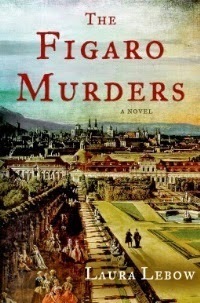 While some members of my extended family are skilled musicians, violinists and opera composers among them, I’m about as musically talented as a cardboard box. Fortunately, this didn’t inhibit my appreciation of Laura Lebow’s The Figaro Murders, which transforms Lorenzo Da Ponte, the real-life librettist for Mozart’s The Marriage of Figaro, into a reluctant sleuth.
While some members of my extended family are skilled musicians, violinists and opera composers among them, I’m about as musically talented as a cardboard box. Fortunately, this didn’t inhibit my appreciation of Laura Lebow’s The Figaro Murders, which transforms Lorenzo Da Ponte, the real-life librettist for Mozart’s The Marriage of Figaro, into a reluctant sleuth. The setting is Vienna in 1786, a city ruled over by the tolerant, progressive-minded emperor, Joseph II, son of Maria Theresa (and brother of Marie-Antoinette). Da Ponte, the court poet, is on deadline for a couple of important commissions, but he doesn’t mind taking time out to help a friend.
Just before he’s carted off to debtors’ prison, his barber, Johann Vogel, who had recently discovered he was adopted, begs Da Ponte to find his real parents. If they’re from the nobility, they may have the funds to secure Vogel’s release.
The situation gets dicey, though, when Da Ponte drops by to see Vogel’s fiancée, a maid at the Palais Gabler. Hours after Da Ponte’s visit, an annoying aristocratic boy from the Palais is found dead, pushed out of an upper-storey window. Accused of the crime and threatened by Pergen, the minister of police, Da Ponte has only one way to clear his name: he must install himself in the household of the Baron Gabler, the prospective ambassador to St. Petersburg, and root out a suspected Prussian spy.
The amiable Da Ponte makes for good company. Admittedly bored by politics, he doubts his abilities to find the perpetrator despite his healthy ego. “Did Pergen really believe that I could solve this crime? True, I am intelligent and observant, as every poet must be…. But hunting down a spy and a murderer! How had I gotten myself into this mess?”
On top of that stress, to pull off his assumed role as poetry teacher to the Baron’s wife, he has to eat with and lodge alongside the servants. How demeaning! Adding even more intrigue is Da Ponte’s hidden past, and assuming this is first in a series, I look forward to seeing how it features in upcoming books.
European politics, a hint of romance, and the staging of a now-famous opera all play roles in this engaging debut mystery. Spending time in the cultured world of 18th-century Vienna is a highlight. Per her bio, Lebow has a master’s in City Planning, and I could easily picture the layout of Vienna under her direction: its narrow streets, market squares, bureaucratic district, and popular theatres. It was only with the architectural terms that I found myself stumbling, needing to look up what entablatures and telamones were.
For those interested in catching glimpses of Mozart, the “small composer” himself, he’s presented as a devoted husband and father who happens to have impressive musical gifts. Da Ponte is the star here, though, a deliberate choice on Lebow’s part (read her informative author’s note for more). In her solidly researched novel, the librettist gets his turn in the spotlight.
The Figaro Murders was published on March 31st by Minotaur ($24.99 / C$28.99, 320pp + author's note). Thanks to the publisher for sending me a copy.
Published on April 08, 2015 17:21
April 5, 2015
The fictional memoirs of George Sand: Elizabeth Berg's The Dream Lover
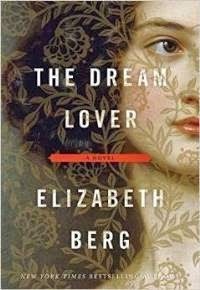 This work marks best-selling writer Berg’s first major venture into biographical historical fiction, a move that’s partly successful. Her subject is exciting and on-trend: George Sand, the nineteenth-century French writer whose insightful novels took readers by storm, and whose cross-dressing persona and many love affairs scandalized contemporary society.
This work marks best-selling writer Berg’s first major venture into biographical historical fiction, a move that’s partly successful. Her subject is exciting and on-trend: George Sand, the nineteenth-century French writer whose insightful novels took readers by storm, and whose cross-dressing persona and many love affairs scandalized contemporary society.Born Amantine-Lucile-Aurore Dupin in 1804, she lived by her own rules, and her imagined voice—warm, sincere, and wise—is wonderfully disarming. As Sand examines her past, from her tense relationships with blood relations through her unhappy marriage and subsequent flight to independence in Paris, we’re introduced to this fascinating woman.
Berg’s descriptive skills are remarkable throughout, but Sand’s actions are too often reported from a distance rather than dramatized. This memoir-like style lets us learn about and admire Sand without placing us in the moment with her. There are exceptions, though, such as her scenes with actress Marie Dorval—her deepest, most passionate attachment—and her philosophical reflections on her continued search for love. It’s at these times that her story feels most immediate and alive.
The Dream Lover is published on April 14th by Random House (hardcover, $28, 368pp). It appears on the LibraryReads list for April. This review first appeared in Booklist's Feb 15th issue.
The novel is being heavily promoted, and the packaging is gorgeous. The flourishes on the image above are a little less prominent on the real thing, and her hair blends in more with the dark background. From the moment I first saw it, I wondered if the image was a softened version of German artist Joseph Karl Stieler's portrait of Nanette Kaula, which appears in Ludwig I's Gallery of Beauties. The jacket doesn't say, but based on the listed source for the painting, it's possible.
Published on April 05, 2015 07:00
April 3, 2015
Paula Brackston's The Silver Witch, a novel of Welsh mystery and magic - plus giveaway
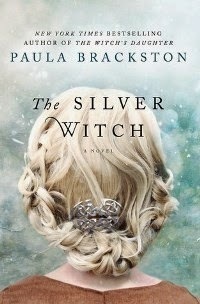 Paula Brackston spins tales of history, mystery, and romance that layer contemporary and historical plotlines with a strong dose of the paranormal. Her absorbing latest follows the journeys of two women living eleven centuries apart along the same lake in central Wales.
Paula Brackston spins tales of history, mystery, and romance that layer contemporary and historical plotlines with a strong dose of the paranormal. Her absorbing latest follows the journeys of two women living eleven centuries apart along the same lake in central Wales.Parallels between them are drawn early on, since they share much in common: their unusual pale looks, their living alone, and their mysterious talents (honored and feared in the case of one of them; raw and uncontrolled in the other, at least as the novel begins).
Seren is a witch and shaman who uses her powers to serve Prince Brynach, whose royal palace sits atop a small crannog, or man-made island, in the lake’s center. The setting is nebulous at first: descriptions of Seren’s wolf-pelt headdress, her visions, and other pagan practices call to mind some ancient Celtic past. The images Seren sees predict betrayal and danger for Brynach, but she has doubters - including Brynach himself, who can’t imagine a traitor in his midst.
Her modern counterpart is Tilda Fordwells, an accomplished sculptor whose plan to begin her married life near Llangors Lake crumbled after Mat’s sudden death in a car accident. Now, living by herself in what would have been their dream cottage, she notices strange things, like electrical failures wherever she goes, visions of people from the past, and an odd sensation about an archaeological dig happening nearby.
As Seren’s tale becomes more historically centered, with details eventually anchoring itself in the early 10th century, Tilda’s tale takes progressively more supernatural turns. It makes for a creative blend, and as the stories continue, the women’s connections become more obvious.
The title partly refers to the women's silver-blond hair, a result of their albinism. The fact that both have "special powers" is a bit cliché, although they aren't the only characters to have magical abilities. Also, in contrast to stereotypically negative portrayals (like in The Da Vinci Code), the novel provides a sympathetic depiction of this oft-misunderstood condition. In the case of Tilda, for example, it’s explained how her albinism meets with uncomfortable stares and makes her eyes sensitive to light.
In parts, The Silver Witch calls to mind The Mists of Avalon for its mystical lakeside atmosphere, and James Long’s Ferney for its sense of the inescapable past. Although it’s neither Arthurian nor a reincarnation story, admirers of both books would do well to check it out.
While some supernatural aspects feel over the top, and the portent-heavy prologue feels unnecessary, it succeeds in evoking people’s deep ties to a place and creatively imagines a lesser-known historical episode – one found in the Anglo-Saxon Chronicle. The plot couldn’t legitimately take place anywhere else, and like all good historical fiction, fantastical or otherwise, it should spur readers to learn more about the place that inspired it.
 Llangors Crannog, public domain photo
Llangors Crannog, public domain photoThe Silver Witch is published by Thomas Dunne in April in hardcover ($25.99, Can$29.99). Thanks to the publisher for sending me an ARC. For your chance to win a copy of your own, fill out the form below. If the winner is based in the US, the publisher will supply the copy; if outside the US, I'll send you mine. Deadline Friday, April 10th.
Loading...
Published on April 03, 2015 06:00
March 31, 2015
New & upcoming historical novels in celebration of Women's History Month, part 2
Here's part two of my gallery of historical novels by women, about women - just finished under the wire, since March is almost over. Part 1 can be found here.
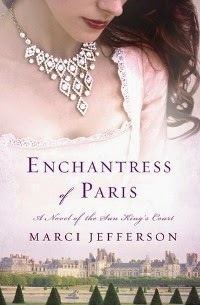
Marci Jefferson's second novel (after Girl on the Golden Coin ) is about Marie Mancini, one of the famous nieces of the ruthlessly powerful Cardinal Mazarin in the Sun King's court. Thomas Dunne, May.
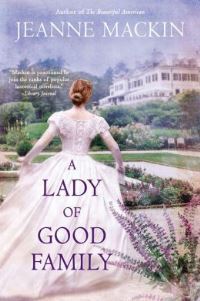
Mackin's newest historical title will introduce readers to a little-known woman who deserves recognition: Beatrix Ferrand, a pioneering landscape architect whose passion for gardens is fixed after a European tour. Her "good family" includes her aunt, writer Edith Wharton. NAL, June.
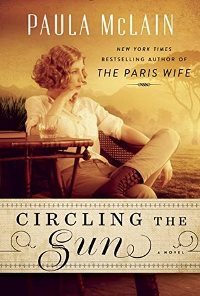
McLain's followup to the bestseller and book club hit The Paris Wife centers on Beryl Markham, noted aviator, adventurer, and memoirist (West with the Night) in colonial Kenya. And yes, she was also known for her love affair with Denys Finch Hatton (among others). Ballantine, August.
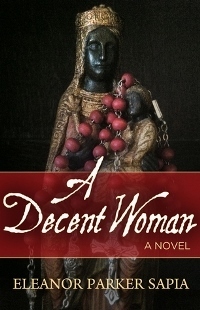
Turn-of-the-century Puerto Rico is the setting for this new novel about Afro-Cuban midwife Ana Belén Opaku and the male-centered society that women were forced to endure in this time and place. Booktrope, February.
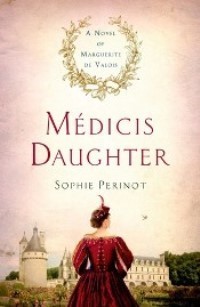
It's not easy being the daughter of Catherine de Médicis, Queen of France. Perinot moves to a new publisher and to hardcover format with her second novel, a tale of Princess Margot, who's caught between family loyalty and a forbidden love at a time of religious turmoil. Thomas Dunne, December.
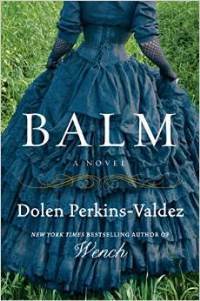
From the bestselling author of Wench comes a new novel, set in the post-Civil War era, about two women and one man who move to Chicago in search of new possibilities now that slavery has been abolished. Amistad, May.
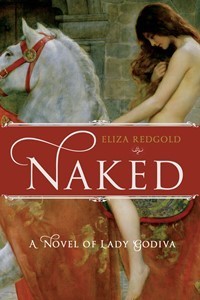
Eliza Redgold (pseudonym of writer and academic Dr. Elizabeth Reid Boyd) takes us back to 11th-century Coventry, England, when Lady Godiva takes a drastic step to protest unfair taxation against Mercia's people. St. Martin's Griffin, July.
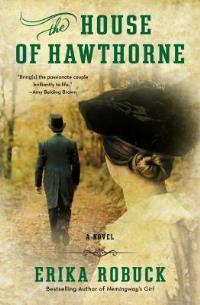
Robuck's latest literary-focused novel examines the marriage of artist Sophia Peabody and writer Nathaniel Hawthorne, and the many challenges they faced before and after their enduring marriage. NAL, May.
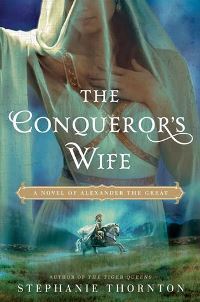
I loved Thornton's previous novel The Tiger Queens so am eagerly anticipating her end-of-year release, which looks at the women surrounding Alexander the Great. NAL, December.
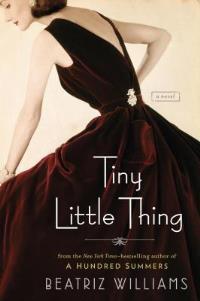
When I read and reviews Williams' The Secret Life of Violet Grant (which was a lot of fun), I hadn't realized it was first in what will be a trilogy about the Schuyler sisters. The heroine of this one is Christina "Tiny" Hardcastle, Vivian's sister, whose picture-perfect society life begins to unravel during the summer of 1966. Putnam, June.

Marci Jefferson's second novel (after Girl on the Golden Coin ) is about Marie Mancini, one of the famous nieces of the ruthlessly powerful Cardinal Mazarin in the Sun King's court. Thomas Dunne, May.

Mackin's newest historical title will introduce readers to a little-known woman who deserves recognition: Beatrix Ferrand, a pioneering landscape architect whose passion for gardens is fixed after a European tour. Her "good family" includes her aunt, writer Edith Wharton. NAL, June.

McLain's followup to the bestseller and book club hit The Paris Wife centers on Beryl Markham, noted aviator, adventurer, and memoirist (West with the Night) in colonial Kenya. And yes, she was also known for her love affair with Denys Finch Hatton (among others). Ballantine, August.

Turn-of-the-century Puerto Rico is the setting for this new novel about Afro-Cuban midwife Ana Belén Opaku and the male-centered society that women were forced to endure in this time and place. Booktrope, February.

It's not easy being the daughter of Catherine de Médicis, Queen of France. Perinot moves to a new publisher and to hardcover format with her second novel, a tale of Princess Margot, who's caught between family loyalty and a forbidden love at a time of religious turmoil. Thomas Dunne, December.

From the bestselling author of Wench comes a new novel, set in the post-Civil War era, about two women and one man who move to Chicago in search of new possibilities now that slavery has been abolished. Amistad, May.

Eliza Redgold (pseudonym of writer and academic Dr. Elizabeth Reid Boyd) takes us back to 11th-century Coventry, England, when Lady Godiva takes a drastic step to protest unfair taxation against Mercia's people. St. Martin's Griffin, July.

Robuck's latest literary-focused novel examines the marriage of artist Sophia Peabody and writer Nathaniel Hawthorne, and the many challenges they faced before and after their enduring marriage. NAL, May.

I loved Thornton's previous novel The Tiger Queens so am eagerly anticipating her end-of-year release, which looks at the women surrounding Alexander the Great. NAL, December.

When I read and reviews Williams' The Secret Life of Violet Grant (which was a lot of fun), I hadn't realized it was first in what will be a trilogy about the Schuyler sisters. The heroine of this one is Christina "Tiny" Hardcastle, Vivian's sister, whose picture-perfect society life begins to unravel during the summer of 1966. Putnam, June.
Published on March 31, 2015 07:00
March 28, 2015
Maureen Gibbon's Paris Red: a bold, observant novel of Manet's most famous model
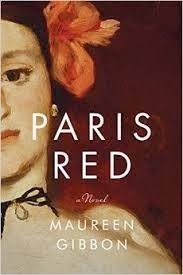 Victorine Louise Meurent, the young woman who posed for Édouard Manet’s innovative, scandalous painting Olympia, among others, is placed at the center of Gibbon’s observant work.
Victorine Louise Meurent, the young woman who posed for Édouard Manet’s innovative, scandalous painting Olympia, among others, is placed at the center of Gibbon’s observant work.In 1862, after an unnamed stranger enters the lives of Victorine and her close friend, Denise, and begins a teasing, charged relationship with them both, she takes a courageous step, leaving behind her impoverished existence as a silver burnisher to pursue him solo.
It becomes clear that she’s his match in sensuality—which surprises and pleases him—and her boldness serves them both well in her role as his model. Their affair is undeniably erotic, yet one of Paris Red ’s strengths lies in its unexpected status as a tale of artistic rather than sexual awakening.
Although only 17 to his thirtysomething, Victorine is no naive ingenue, and her involvement with Manet and his world serves as her entrée into a new way of envisioning and experiencing life. Full of animated scenes of working-class Paris in the 1860s, Gibbon’s color-rich prose moves with the deliberate urgency of brushstrokes on canvas.
Maureen Gibbon's Paris Red will be published on April 20th by W. W. Norton (hardcover, $24.95, 224pp). This review first appeared in March 15th's Booklist.
Victorine Meurent (1844-1927) posed for numerous works by Manet, including the famous Le Déjeuner Sur l’Herbe (1863). What isn't as well known is that she became a noted artist in her own right, exhibiting her work at Paris's Salon in 1876, although only one of her paintings has survived. Read more about her in Kathryn Hughes' 2013 article for the Telegraph, "Manet's Forgotten Muse," and in the Guardian, V. R. Main's "The Naked Truth."
For more on Paris Red, Stephanie Renee dos Santos has a new review and interview with Maureen Gibbon at her blog, Love of Art in Historical Fiction.
Published on March 28, 2015 08:29
March 26, 2015
Giveaway winners, blog feedback, and some links
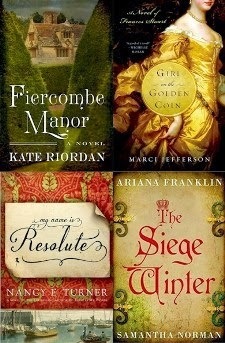
Thanks to everyone who entered my 9th anniversary giveaway last week. It was great to see so many entries, and I loved reading your comments - it felt like it was my real birthday!
First, the giveaway winners:
Fiercombe Manor will be going to Martha E.
Girl on the Golden Coin will be going to Mary Jane H.
My Name is Resolute will be going to Maria G.
The Siege Winter will be going to Scott R.
Emails have been sent to all the winners. Please respond within a week to claim your prize, and hope you'll enjoy your books.
As for what readers said they enjoyed most and would like to see more of, just to summarize briefly: there were a number of people who mentioned the reviews and posts of forthcoming books, which I'll plan on doing more of this year, in addition to some themed lists. If you have a request for a specific subject for a themed list, feel free to leave me a comment or send me an email, and see what I can do. I also think it's cool that some of you are using the preview posts to take to the library or place library hold requests. The feedback you've all provided has been very helpful for me in seeing what you're interested in. I appreciate every comment and will have to think of something special to do next year for the 10th.
More reviews will be posted soon, but in the meanwhile:
The Walter Scott Prize shortlist has been announced, with seven titles out of the original 15 longlisted titles remaining in contention. They are:
The Zone of Interest by Martin Amis
The Lie by Helen Dunmore
Viper Wine by Hermione Eyre
In the Wolf's Mouth by Adam Foulds
Arctic Summer by Damon Galgut
A God in Every Stone by Kamila Shamsie
The Ten Thousand Things by John Spurling
More from the BBC, and at the History Girls blog, Elizabeth Laird, a member of the judging panel, has concise overviews of all seven books. Also, Larry at the excellent blog Novel Historian has been providing critical reviews of some of the shortlisted and longlisted titles, as well as other works of historical fiction.
I've been slowly updating the HNS Forthcoming Books page for 2015, which now has info listed through next January - though it's especially incomplete for the later months. Also at the Historical Novel Society site, Fiona Sheppard maintains a similar list of children's and YA titles, and she's found details on new titles coming out over the next 12 months.
Published on March 26, 2015 07:13
March 23, 2015
Book review, with historical notes: A Slant of Light, by Jeffrey Lent
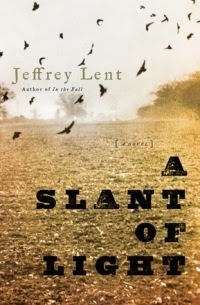 A somber and breathtaking Hardyesque vision of a little-known American past, Lent’s newest epic unfolds with the assured timelessness of a classic. The setting is New York’s Finger Lakes region, a land of agrarian bounty where peculiar religious movements once took root.
A somber and breathtaking Hardyesque vision of a little-known American past, Lent’s newest epic unfolds with the assured timelessness of a classic. The setting is New York’s Finger Lakes region, a land of agrarian bounty where peculiar religious movements once took root.Mystery surrounds the murders of Amos Wheeler and his lover, Bethany Hopeton, by her husband, Malcolm, after he returns from the Civil War. It’s not easy for anyone, Malcolm especially, to cope with his dreadful act.
Also affected are Harlan, the Hopetons’ hired boy, and August, a caring man who shelters Harlan and his sister. Several interlocking secrets (Why does Harlan remain loyal to Malcolm? What was Bethany’s true nature?) are skillfully untangled both by looking backward and moving ahead.
There’s an overabundance of detail on farming, but many sentences demand rereading for their sheer beauty, and each love story—some tragic, others newly born—has a poignant emotional charge. Lent offers eloquent insight into what makes his characters tick, yet enough unknowns remain to keep the novel unpredictable through the final pages.
Jeffrey Lent's A Slant of Light will be published in early April by Bloomsbury USA (hardcover, $27, 368pp). This review first appeared in Booklist's February 15th issue.
Some other notes:
More specifically, the novel takes place in Yates County, New York, in the 1860s. If Lent's characters were real, they could have known my ancestors, who settled in the region in the early 1800s and were still living there during the Civil War. I've visited in person, and it's beautiful country.
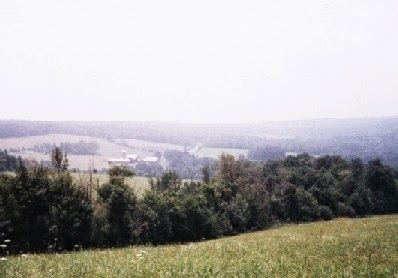 The hilly farmland of Italy, New York, on a hazy day in August 2001; photo by me
The hilly farmland of Italy, New York, on a hazy day in August 2001; photo by meMany towns and villages of Yates County have colorful names with interesting histories, among them Milo, Jerusalem, Dundee, Penn Yan, and Italy, which sits across the county line from the town of Naples in Ontario County.
When you do genealogy research in an area, you get to know what records exist and where, the layout of the towns, people's traditional occupations, churches, and naming traditions... but you don't always absorb the cultural history in detail. In that sense, I'm grateful to Lent's novel for giving me further perspective on a truly fascinating slice of history and breathing life into it.
There are references throughout the novel to someone called the Public Friend, a religious figure whose beliefs still provide guidance on daily living, even decades after her death. The Kirkus reviewer called her "a female divine clearly modeled on the Shakers’ Mother Ann Lee." While it's true that her teachings were shaped by those of Ann Lee, she isn't fictional.
The Public Friend—who was also called the Universal Friend—is a historical figure who influenced religious thought in New England, Pennsylvania, and western New York in the late 18th and early 19th centuries. An evangelical preacher, her birth name was Jemima Wilkinson, although she didn't answer to that name after a near-fatal illness and her subsequent religious awakening. After some wanderings, in 1794 she and her followers settled in a hamlet she called "the new Jerusalem."
The Yates County Office of Public History has much more on her and the utopian community she founded. Upstate New York was the crucible for many early American reform movements, some better known than others, and it was a treat to see one of them depicted in a new work of fiction.
Published on March 23, 2015 06:00
March 20, 2015
A gallery of new and recent historical novels by Australasian women writers
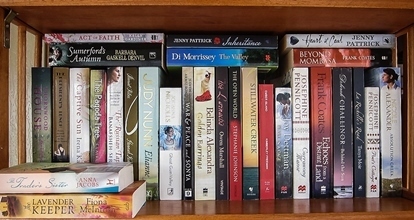
Now that I have a new sun porch, and thus more room for bookcases in the house, I've set aside one shelf for historical novels from Australasian authors and publishers. Just because most are hard to find in this corner of the world – I don't let 10,000 miles stand between me and a book I want to read.
The margins on this blog are pretty narrow, so I also have a larger image of the shelf linked up.
Because they can be expensive to obtain in print, I get a fair number of these titles on Kindle, also. I'm always interested in discovering new historical fiction writers and being transported via fiction to new locales. I've also been following along with the Australian Women Writers' Challenge in an attempt to keep up with what's coming out and may join the challenge myself next year.
Which brings me around to the topic of the Historical Novel Society's first Australasian conference, which kicked off yesterday in Sydney. This is a significant and very exciting undertaking, and I extend my congrats to the organizers for their hard work in pulling everything together. I wish I was there in person and hope all attendees are having a wonderful time.
Since I've been celebrating Women's History Month here at the blog, this seems like a good time to showcase historical novels by Australasian women authors. The books (15 in all) are set all over the place, and since there are a lot of them, I'm just giving brief notes on the settings of each. For those like me who don't live in the region, I recommend Fishpond.com for print editions (they offer free shipping worldwide) and also suggest checking your local Amazon to see if Kindle editions are for sale.
Also, since I don't have the opportunity to see these books in stores locally, there are going to be many titles I'm missing. Please feel free to recommend others in the comments so we can all add them to our TBRs.
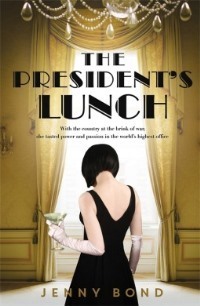
The inner workings of President Franklin D. Roosevelt's White House, seen through the eyes of a teacher who gets a job with the First Lady. Hachette Australia, July 2014.

A female brewer strives to make a go of her profession in medieval England. Harlequin MIRA Australia, October 2014.
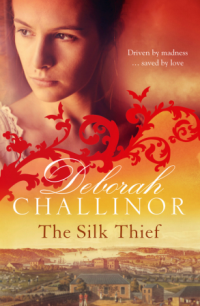
Third in Challinor's Convict Girls series, this is the story of three women determined to make new lives for themselves after being transported to Sydney Town in 1830. HarperCollins Australia, November 2014.
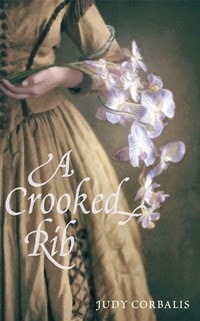
This Victorian-set novel focuses on the disintegrating marriage of Sir George Grey: explorer, governor of South Australia, and later governor of New Zealand. Random House New Zealand, forthcoming July 2015.
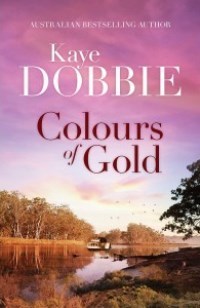
A dual-time saga set amidst the Australian goldfields in the 1860s and in the present, and featuring a young woman with paranormal abilities. Harlequin MIRA Australia, March 2014; ebook out this month (with this cover).
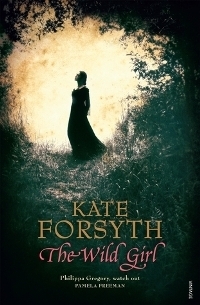
Set in early 19th-century Germany, the story of Dortchen Wild, who fell in love with Wilhelm Grimm, one of the famous scholars who collected old fairy tales -- and Dortchen's many contributions to the Grimm brothers' endeavor. Random House Australia, March 2013. A US edition of this book will be out in July, but here's the original Australian cover.
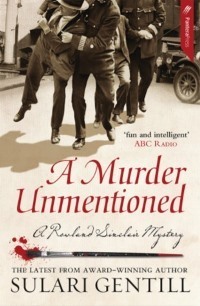
The latest entry in the mystery series involving Rowland Sinclair, artist and gentleman in pre-WWII Australia; secrets from his past may affect him personally. Pantera Press, 2014.
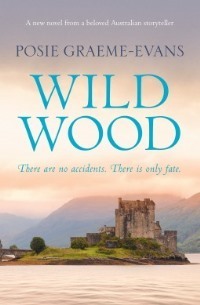
A time-slip novel set in the beautiful Scottish borders region, set now and in medieval times. It's also newly out from Atria in the US (this is the original cover). Simon & Schuster Australia, April 2015.
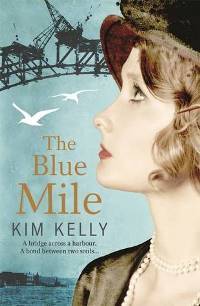
A love story between two unconventional people, set in Sydney during the Depression years. Macmillan Australia, May 2014.
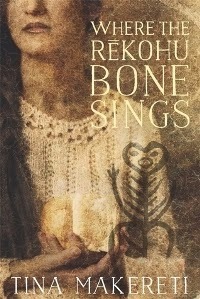
This saga traces the journeys of four individuals who "confront the complexity of being Moriori, Maori, and Pakeha" (of European descent) in 1880s New Zealand and a century later. Vintage Books New Zealand, March 2014.
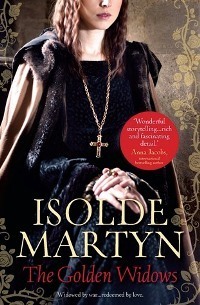
Martyn's home ground is medieval England, and her newest centers on two strong women from the Wars of the Roses: Elysabeth Woodville, the future wife of Edward IV, and his cousin Kate Neville. Harlequin MIRA Australia, August 2014.
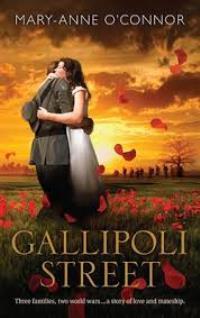
An epic WWI-era saga involving three families living on the rural outskirts of Sydney. Thanks to Yvonne from A Darn Good Read for alerting me to this book. Harlequin MIRA Australia, March 2015.
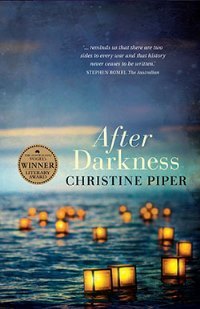
Winner of the Australian/Vogel's Literary Award in 2014, this literary novel follows a Japanese doctor as he's interned as an enemy alien in WWII Australia. Allen & Unwin, April 2014.

Sawyer has written a number of well-received historical epics, but this is her first historical mystery, a police procedural set in the countryside of 18th-century France. I believe this is self-published via Amazon, February 2015.
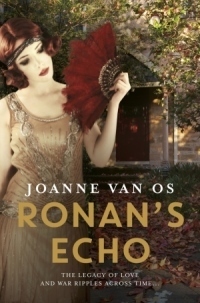
An Irish-Australian family saga in which secrets dating from WWI reverberate into the present. Macmillan Australia, March 2015.
Published on March 20, 2015 11:00



